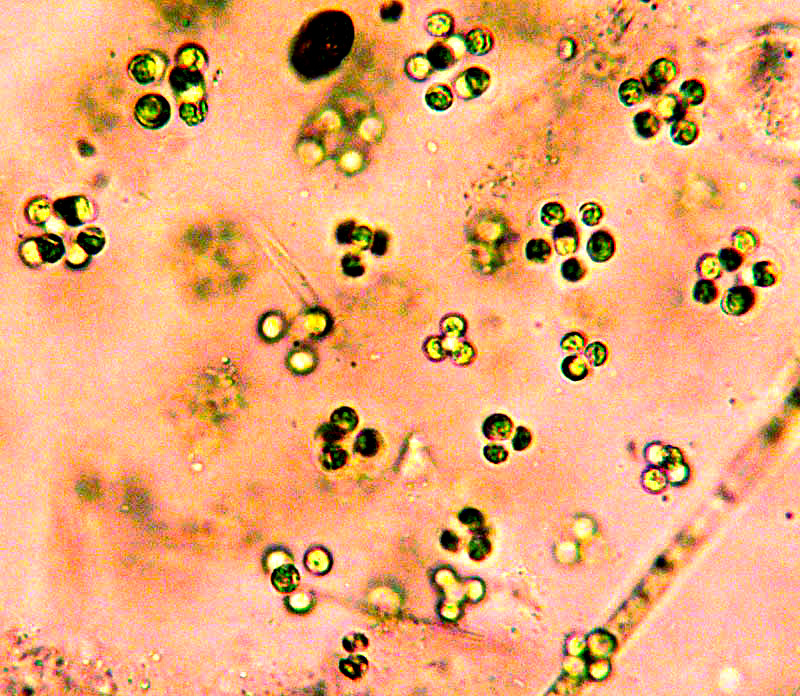Excerpts from Jim Conrad's
Naturalist Newsletter

from the March 3, 2013 Newsletter issued from the valley of the Dry Frio River in northern Uvalde County, southwestern Texas, on the southern border of the Edwards Plateau; elevation ~1750m (~5750 ft); N29.62°, W99.86°; USA
SPHAEROCYSTIS ALGA
Lately an unusual and distinctive alga has been showing up in microscopically examined water from the little Dry Frio River behind the cabin. You can see what's so interesting about it above.
Unlike most of the algae we've looked at, this one is not filamentous -- not composed of elongate cells attached end to end. Here solitary, spherical algal cells, each cell containing one photosynthesizing chloroplast, are clustered into small, more or less geometrical groupings about 0.5mm across (1/64th inch) and evenly spaced from one another as if held in place by unseen forces. If you look closely you can see that the individual cells are embedded in what appears to be thick, transparent coverings of a jelly-like substance -- referred to as their "mucilaginous sheaths."
Not many algae species look like this, so it was easy to narrow our specimen's identity down quite a bit. The excellent, illustrated but not-yet-finished "web key" to algae genera at http://www.algalweb.net/search1.htm led me to the genus SPHAEROCYSTIS. The four or so species in that genus are described as freely floating -- or planktonic -- inhabitants of freshwater found in Europe, North America and South Africa. Other genera with very similar if not identical species are recognized, since the taxonomy of this group of algae is poorly understood.
Therefore "Sphaerocystis" is just an educated guess, the name we'll file our picture under on the Internet to let the world know that the species resides here in Uvalde County's Dry Frio River in southwestern Texas. I'll bet that some later student of the group one day will be tickled to see it.